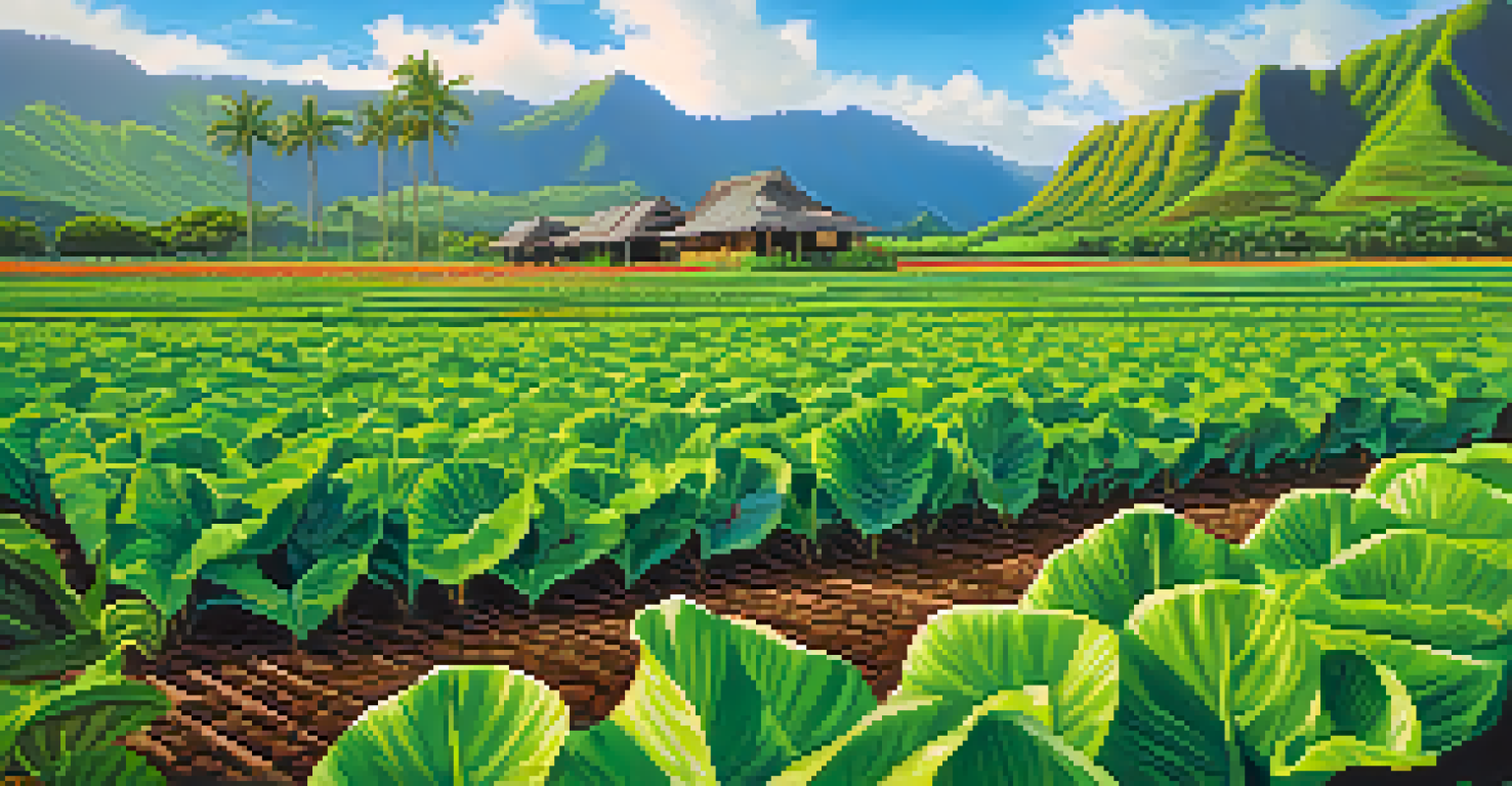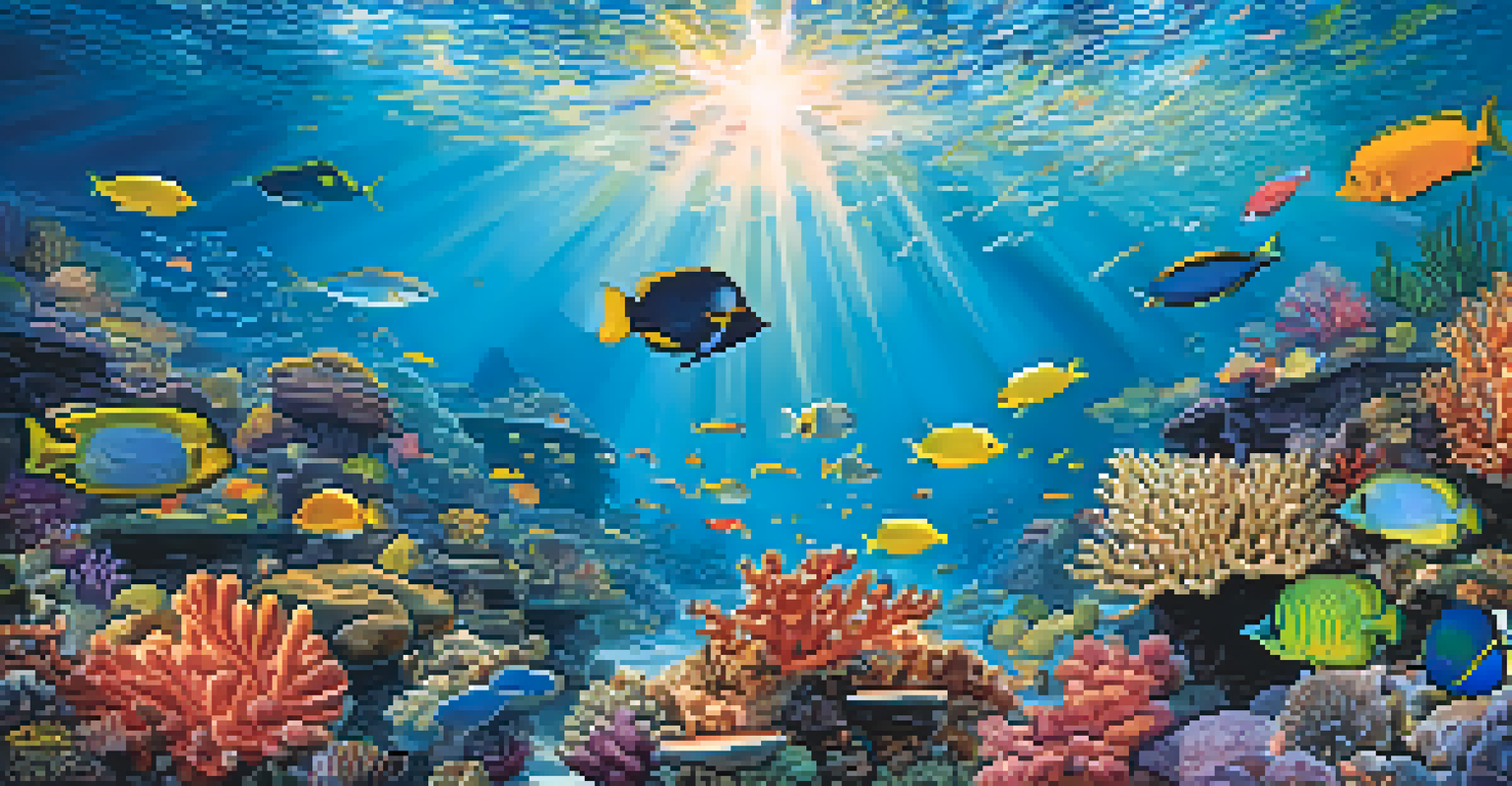Climate Change Impacts on Hawaii's Natural Resources

Understanding Climate Change and Its Global Context
Climate change refers to long-term shifts in temperatures and weather patterns, primarily driven by human activities. As greenhouse gas emissions rise, the Earth's climate undergoes significant changes, impacting ecosystems worldwide. In Hawaii, these changes are particularly pronounced due to the islands' unique geography and biodiversity.
What we are doing to the forests of the world is but a mirror reflection of what we are doing to ourselves and to one another.
The effects of climate change are not isolated; they ripple through various natural resources and ecosystems. Rising sea levels, increased temperatures, and altered precipitation patterns pose significant threats to Hawaii's delicate balance. Understanding these global phenomena helps us appreciate the urgency of addressing climate change in local contexts.
Hawaii's ecosystems are not just beautiful; they are crucial for the islands' cultural heritage and economic stability. By grasping the broader implications of climate change, we can better appreciate the specific challenges Hawaii faces and the importance of protecting its natural resources.
Rising Sea Levels Threatening Coastal Areas
One of the most visible impacts of climate change in Hawaii is the rising sea levels. As polar ice melts and oceans warm, the water encroaches on coastal areas, leading to erosion and habitat loss. This is particularly concerning for Hawaii's beaches, which are not only vital for tourism but also serve as important ecosystems for various marine life.

Communities along the coast are seeing their shorelines change, forcing some residents to consider relocation. The loss of land can also impact local economies that rely on beach tourism and fishing. As these areas become increasingly vulnerable, there is a growing need for adaptive strategies to protect both people and the environment.
Rising Sea Levels Endanger Hawaii
Hawaii faces significant threats from rising sea levels, leading to coastal erosion, habitat loss, and economic impacts on tourism and fishing.
In addition to the physical loss of land, rising sea levels can lead to saltwater intrusion into freshwater supplies. This contamination poses a risk to agriculture and drinking water sources, further complicating the sustainability of Hawaii's natural resources.
Coral Reefs: The Canaries of Ocean Health
Hawaii is renowned for its vibrant coral reefs, which are essential for marine biodiversity and coastal protection. However, rising ocean temperatures and increased acidity from carbon dioxide absorption are causing coral bleaching. This phenomenon weakens corals and disrupts the entire ecosystem that depends on them.
The Earth is what we all have in common.
The loss of coral reefs not only affects marine life but also impacts tourism and fishing industries, which are crucial to Hawaii's economy. When corals die off, the habitats for fish and other marine creatures diminish, leading to declines in fish populations. This can have a cascading effect on local communities that rely on these resources for their livelihoods.
Efforts to protect and restore coral reefs are becoming increasingly urgent. Initiatives such as reef monitoring and marine protected areas aim to mitigate the impacts of climate change and promote resilience in these vital ecosystems.
Changing Weather Patterns Affecting Agriculture
Hawaii's agriculture is deeply intertwined with its climate, and changes in weather patterns pose significant risks. Altered rainfall patterns can lead to droughts or excessive rainfall, both of which can hinder crop production. Farmers are facing the challenge of adapting to these unpredictable conditions while ensuring food security for the islands.
The shift in climate also affects the types of crops that can be grown successfully. For instance, traditional crops like taro, which thrive in specific moisture conditions, may struggle as those conditions change. This not only impacts the agricultural economy but also threatens cultural practices associated with these crops.
Climate Change Threatens Biodiversity
The unique native species of Hawaii are at risk as climate change disrupts their habitats, leading to potential declines or extinction.
To combat these challenges, local farmers are exploring innovative methods such as drought-resistant crops and sustainable farming practices. These adaptations are crucial for maintaining food resources and preserving Hawaii's agricultural heritage in the face of climate change.
Impact on Native Species and Biodiversity
Hawaii is home to a unique array of native species, many of which are found nowhere else on Earth. Unfortunately, climate change poses a dire threat to this biodiversity. Changes in temperature and precipitation can disrupt the delicate habitats that these species rely on, leading to declines or even extinction.
For instance, native birds, such as the ʻIʻiwi and the Hawaiian Goose, face challenges from habitat loss and the spread of invasive species that thrive in warmer conditions. As their environments change, these birds may struggle to find food and suitable nesting sites, making conservation efforts more critical than ever.
Protecting Hawaii's native species requires a multifaceted approach, including habitat restoration and the management of invasive species. By prioritizing biodiversity conservation, we can help ensure that Hawaii's natural heritage endures for future generations.
Water Resources: The Lifeblood of Hawaii
Water is a vital resource for all life, and in Hawaii, it plays a crucial role in everything from agriculture to drinking supplies. However, climate change alters rainfall patterns and increases evaporation rates, putting pressure on these already limited water resources. The challenge is to manage water sustainably amid these changing conditions.
The islands rely heavily on freshwater aquifers, and rising sea levels can lead to saltwater intrusion, reducing the availability of potable water. Additionally, fluctuating rainfall can create periods of drought, straining both agricultural needs and domestic water supplies. This calls for innovative water management strategies to ensure that everyone has access to this essential resource.
Cultural Heritage at Risk
Climate change jeopardizes Hawaii's cultural practices by impacting vital natural resources that are deeply intertwined with the identity of its people.
Community efforts, such as rainwater harvesting and groundwater recharge projects, are becoming increasingly important. By adopting sustainable practices, Hawaii can safeguard its water resources and adapt to the challenges posed by climate change.
Cultural Implications of Climate Change in Hawaii
Hawaii's natural resources are not just about ecology; they are deeply intertwined with the culture and traditions of its people. As climate change impacts the environment, it also threatens cultural practices and ways of life. The loss of traditional fishing grounds and agricultural lands can erode the cultural identity that is closely tied to these resources.
For many native Hawaiians, the land and sea are sacred, and their stewardship practices have sustained these ecosystems for generations. Climate change disrupts these traditions, creating a sense of urgency to advocate for environmental justice and preserve cultural heritage. This highlights the need for policies that consider both ecological and social dimensions.

Engaging local communities in conservation efforts is essential to ensuring that cultural practices continue. By integrating traditional ecological knowledge with modern science, Hawaii can forge a path that honors its past while addressing the challenges of the future.
Confronting Climate Change: Solutions and Hope
While the impacts of climate change on Hawaii's natural resources are daunting, there is hope in the form of proactive solutions. Community initiatives, government policies, and educational programs are all crucial in the fight against climate change. By working together, residents and organizations can develop strategies that protect Hawaii’s unique environment.
Examples include renewable energy projects, such as solar and wind farms, which help reduce dependence on fossil fuels. Additionally, conservation efforts aimed at restoring native habitats and protecting endangered species are vital. These initiatives not only benefit the environment but also foster community engagement and resilience.
Ultimately, confronting climate change requires a collective effort that involves everyone—from individuals to large organizations. By prioritizing sustainability and fostering a culture of environmental stewardship, Hawaii can navigate the challenges ahead and protect its natural resources for future generations.